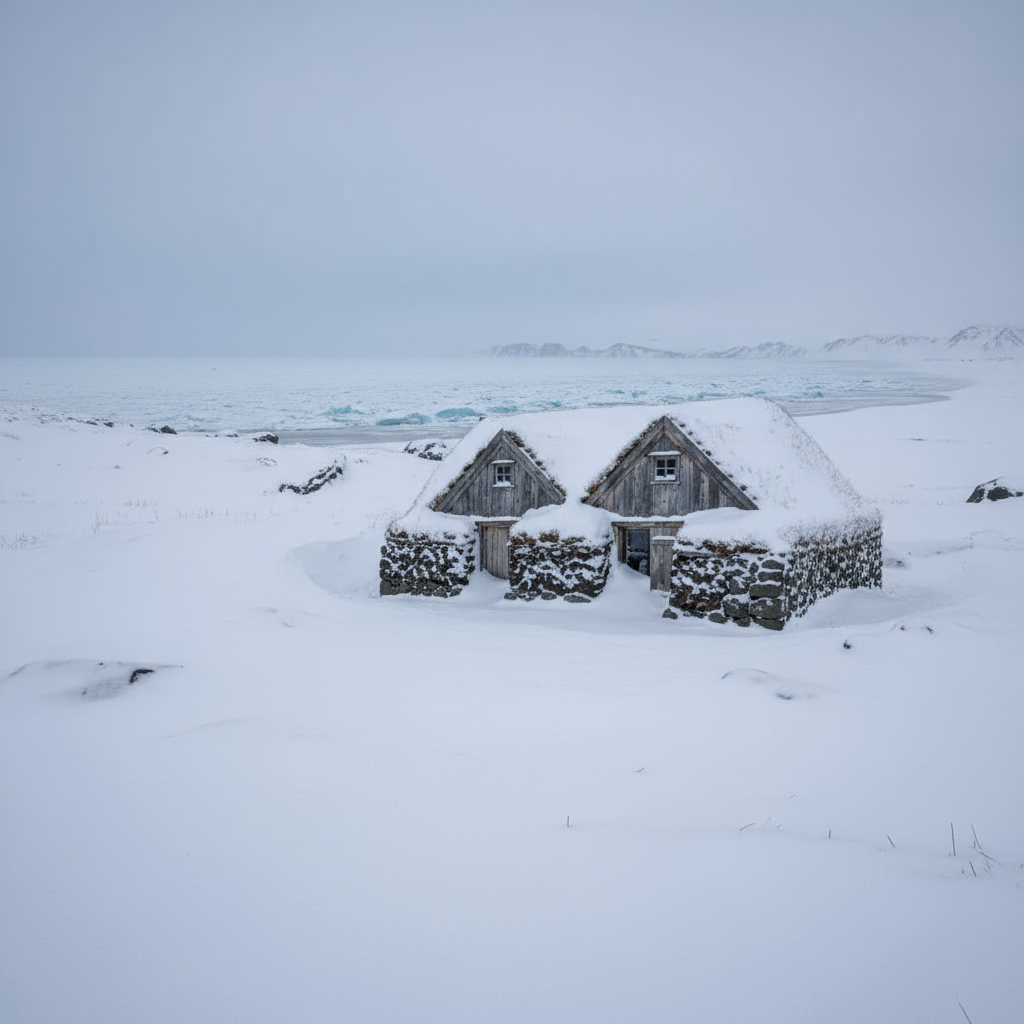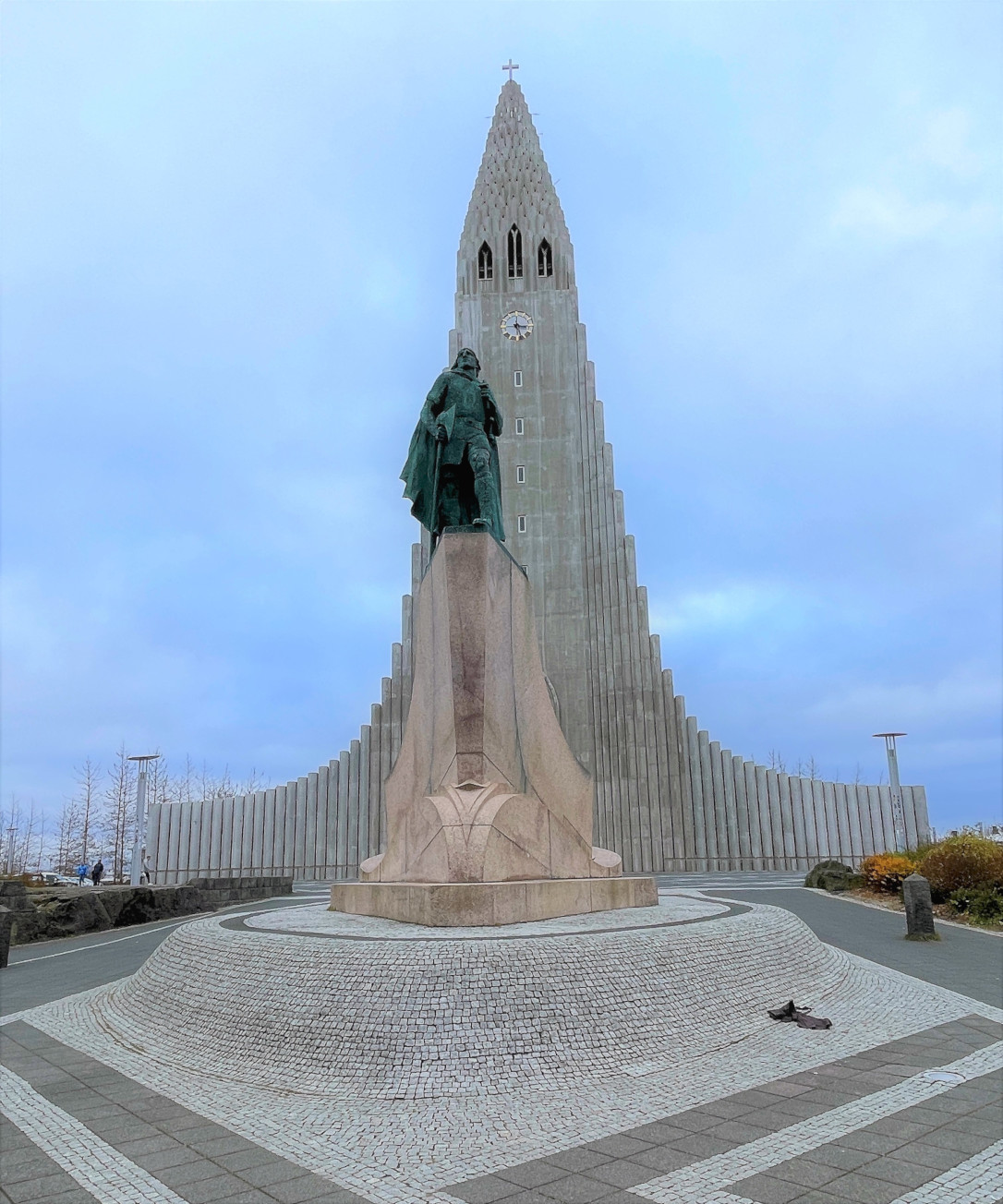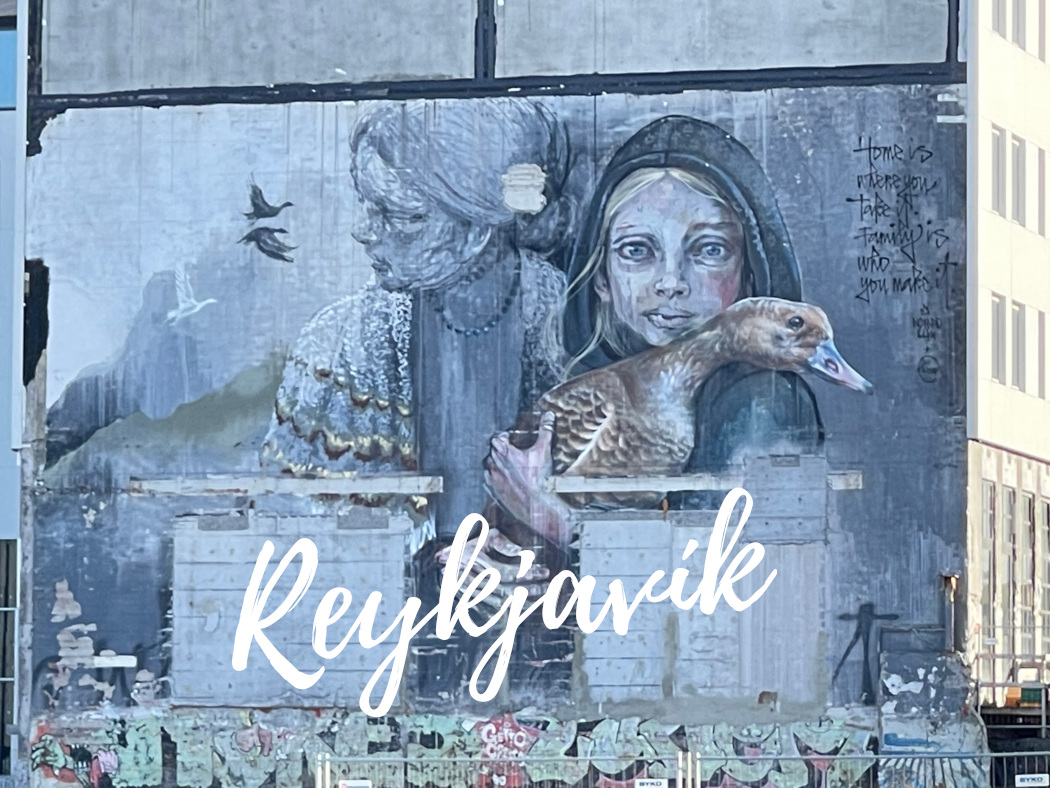 |
| The Pond (Tjörnin) and Hólavalla cemetery in the background. North is to the right in the picture and South is to the left. Photo by Jimmy Kirkus-Lamont |
Hólavalla cemetery is located right above the Pond (Tjörnin) in downtown Reykjavik. Between the oldest part of the cemetery and the Pond is a street called Suðurgata. The street name Suðurgata, is fairly new. It has had a few different names, among them are Cemetery Street and Love Street.
The north end of Suðurgata meets Aðalstræti in the exact spot as my previous blog story took place. Continuing on to Aðalstræti and following the road until it turns eastward up Vesturgata, you will find yourself in the area of some of Reykjavik’s oldest turf houses. They were called Hlíðarhús, but today it is Vesturgata 24, 26a, 26b, 26c and 28.
 |
| Top: Vesturgata seen from Ingólfstorg. Photo by Pierre-Selim. Bottom: Blue house is Vesturgata 26a and red house Vesturgata 26b. Photo by SNappa2006 |
Jón Þórðarson (1818-1885), lived with his wife, Jódís Sigurðardóttir and kids in one of the turf houses on Hlíðarhús. His house was where Vesturgata 26a is today. He was a wealthy farmer, a captain and a hotshot around town. He was one of the few who owned a ship and was granted access to fish in all of Seltjarnarnes (Reykjavik peninsula).
Jón and two other distinguished Icelanders, Geir J. Zoëga and Kristinn Magnússon from Engey, were selected to attend a fish show in Bergen, Norway in 1865. Together they bought a decked ship ( þilfar) they could take fishing in Copenhagen. They named the ship “Fanny”. For several years it was the only decked ship in Reykjavik.
Side story:
Back to the main story.
It was the norm in Reykjavik for farms to have a wake in their home. At the end of each wake, Jón would always read the scriptures. Jón and his daughters would open and close each wake with psalms. Their home atmosphere was loving and welcoming.
Jón would often go over to Vatnsmýri to tend to his moss. Vatnsmýri is located on the southern end of the Pond (Tjörnin) and is now a beautiful park area.
 |
| Pictures of Vatnsmýri on the south-side of the Pond. Photos by Szilas |
 |
| Top: a snippet of the first picture in this blog. It is zoomed in on Hólavalla cemetery and Suðurgata. Bottom: a snipped of an aerial photo from 1919 by M. Ólafsson. Hólavalla cemetery and Suðurgata can clearly be seen. Notice the difference in trees. |
 |
| Suðurgata. Hólavalla cemetery seen on the left side. Back when Jón was alive, the trees were not there and the area much more barren. Photo by Sampo |
 |
| Hólavalla cemetery with Suðurgata on the other side of the fence to the left. |





